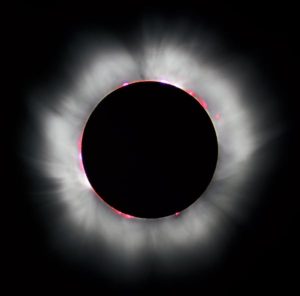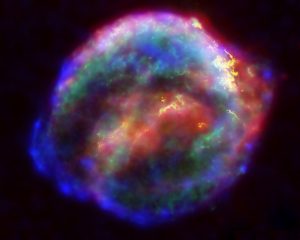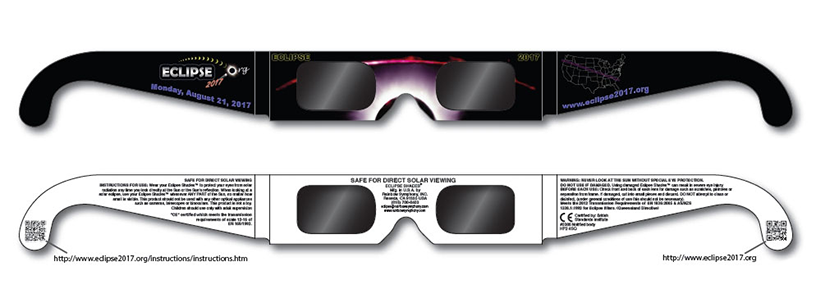I had the pleasure of visiting Ketchum this weekend to talk with the folks there about the Aug 21 solar eclipse. Ketchum is near the southern edge of the path of totality and so will experience an eclipse a little longer than a minute.
On the way, I visited the Craters of the Moon National Monument, site of one of the youngest flood basalt fields in the world, young enough that it may erupt again.
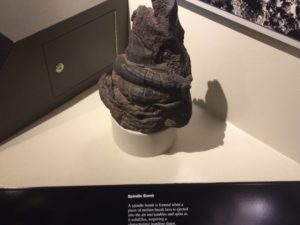
The spindle bomb on display at the Craters visitors’ center.
Among the exhibits in the visitors’ center, I found a display describing the spindle volcanic bomb – a chunk of lava that supposedly flew through the air while molten and froze out into a twisted and stream-lined shape as a result.
After being chased off one of the cinder cones by a surprise rain storm, I piled back into the car and continued on to Ketchum.
When I got there, I met Alisa Sergeyeva, a staff member with the Ketchum City Hall who had invited me to speak, and we set up for a presentation on the beautiful town square.
From my perspective, the talk went well (although we had to improvise a bit since my powerpoint presentation was difficult to see in the Sun) – lots of laughs and questions from the hundred or so attendees.
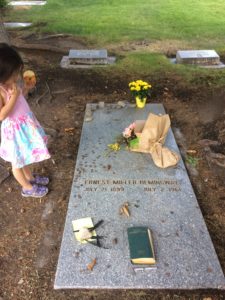
Hemingway’s grave.
After the presentation, I set up the Coronado solar scope to do some sungazing and then a short pilgrimage to the Ketchum City Cemetery where, Alisa explained, Ernest Hemingway is buried.
By way of a remembrance, I stopped off at The Sawtooth Club, supposedly a Hemingway haunt, before heading back to the hotel for the night.
I posted the presentation I gave below.
